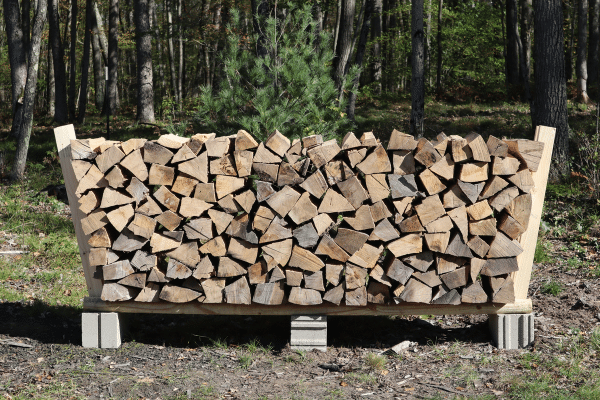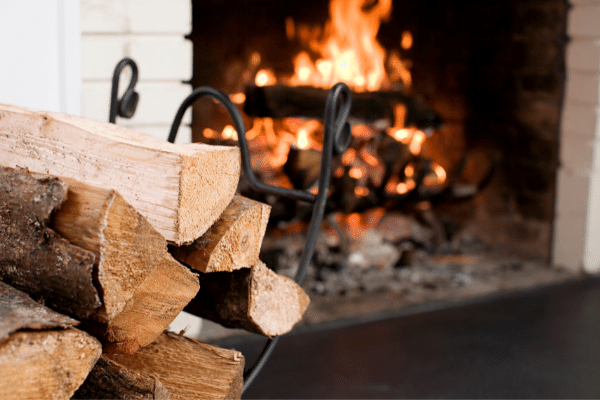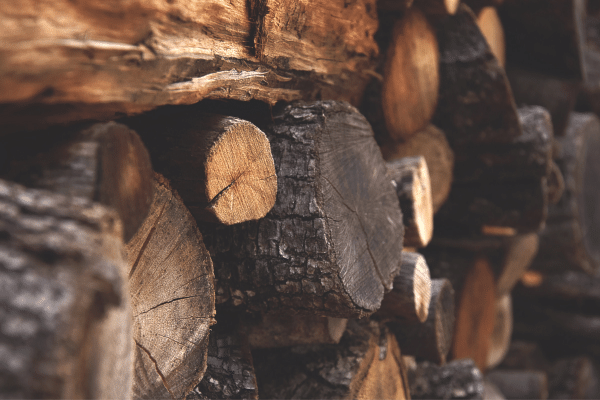- Home
- Best Firewood
- Best Way to Stack Firewood
Best Way To Stack Firewood
This post may contain affiliate links so I earn a commission.
The best way to stack firewood is raised off the ground, protected from the elements, while being exposed to lots of airflow ensuring the wood is allowed to season and stay dry while storing.
In order to have a nice, roaring fire, the firewood you use needs to be dry enough to properly burn.
In order to season, firewood needs to have wind pass through between the logs, even when it is being protected above from rain and snow.
Keeping your firewood raised up off the ground is crucial as well because wood that rests on the ground is prone to mold and decay, along with being the perfect spot for bugs and ants to live.
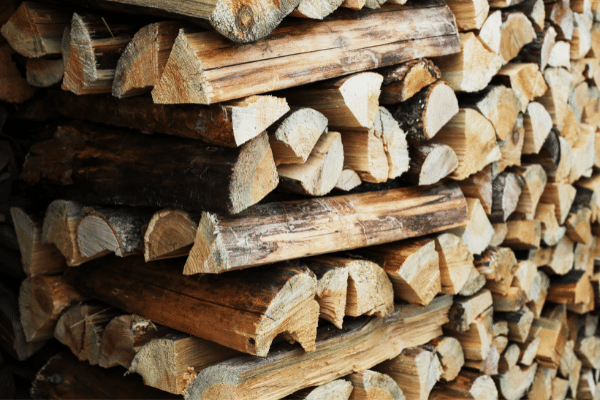
There are several different methods of stacking your firewood
that can help speed up the seasoning process and ensure that all of your firewood
will dry out evenly, and stay dry until you're ready to burn it.
To learn more, let's look at a few popular methods listed below.
Holz Hausen Method Of Stacking Firewood
Stacking firewood using the Holz Hausen method is often considered the best way to stack firewood in Germany, and it's quickly catching on in the United States.
Also called a "wood house" or "beehive woodpile" it's not only very aesthetically pleasing to look at, it also allows a lot of wind to reach the interior of the stack and dry out the wood.
On a level piece of ground, create a circle with your split logs that's roughly 6 feet in diameter.
Next, place your first layer of logs with the ends resting on top of the outer layer as shown in the picture below.
This allows your logs to angle towards the center of pile, which reduces the possibility of your stack falling over.
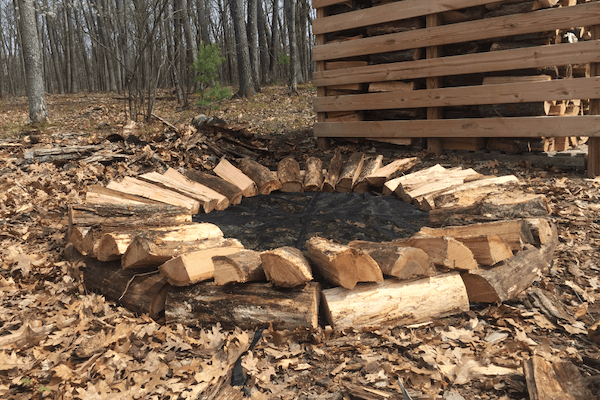
Start stacking in a circular motion, ensuring all of your bark covered pieces face upwards if possible, but it's not crucial if you don't.
If at any point your logs are no longer angling inward, create another outside circle of logs, like you did on your first row.
This also creates neat patterns in the wood, and some get very creative with their designs at this step.
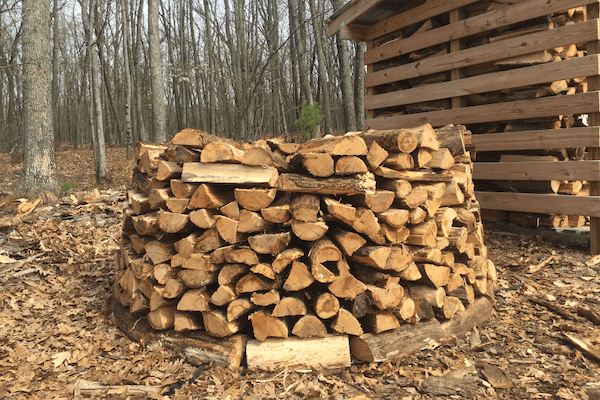
After reaching your desired height, cap off your pile by creating a roof with the bark of the wood facing up if possible.
Do this by continuing to work in circles.
You can also use a circular tarp to place over the top, just make sure you only cover the top portion of the Holz Hausen and stake down your tarp, or it will quickly blow away.
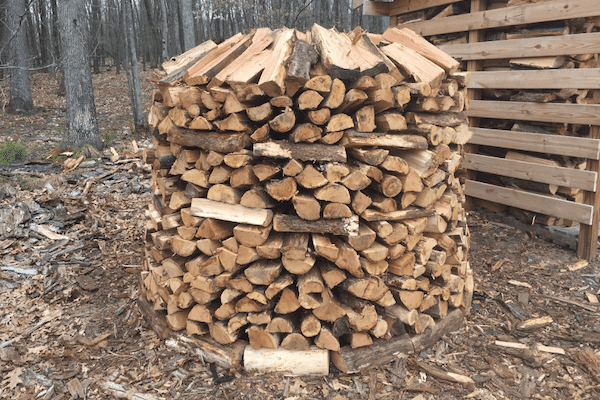
In the end, you will have a circular pile that looks like a beehive, or if you are extremely neat with your piling, a small house.
The method described above is also commonly called the Norwegian way of stacking firewood or even the circle method of stacking firewood.
Perhaps the most unique aspect of this design, and why some consider it the best way to stack firewood, is the ability to throw randomly sized pieces of logs into the center of the stack as you build up the sides as shown below.
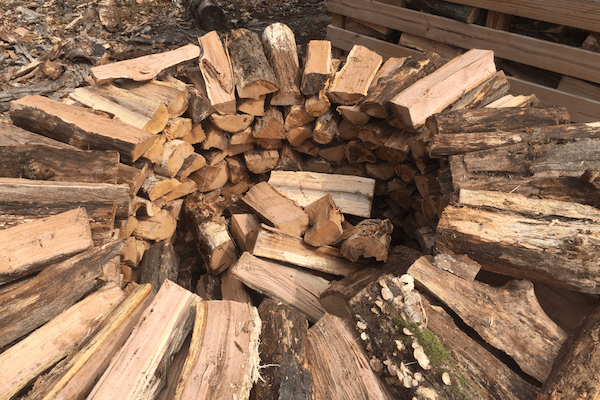
This makes stacking a lot of firewood, especially those odd shaped pieces, really fast and easy.
Plus, since the design of the stack allows airflow to reach the center of the stack, the wood thrown into the middle dries quickly and evenly.
Best Way To Stack Firewood Using An End Pillar
Due to its stability and support, the end pillar wood stack is considered the best way to stack firewood by a majority of people who burn firewood.
To begin, start with two similar-sized split logs and place them parallel to each other.
Using two pieces of split wood that are similar in size is important because your pillar will become slanted in one direction if you don't.
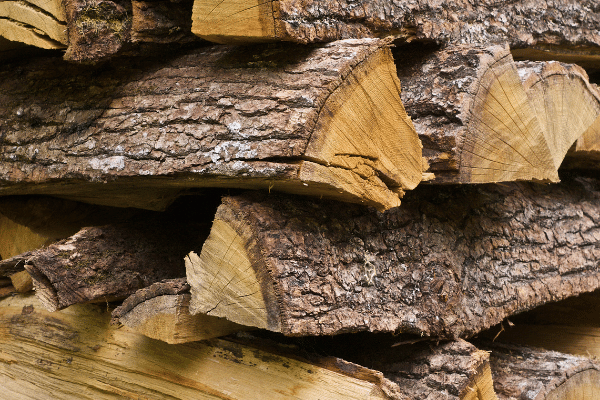
Build the next layer with two logs (similar sized to the first) and place them perpendicular on top the first logs.
You're basically making a crisscross pattern with the logs.
Continue the basket weaving pattern until you have a pillar the height of your choosing, typically around 4 feet tall.
Several feet away (or however long you would like to make your pile), make another pillar using the same method.
It's similar to creating two bookends to stack your firewood between.
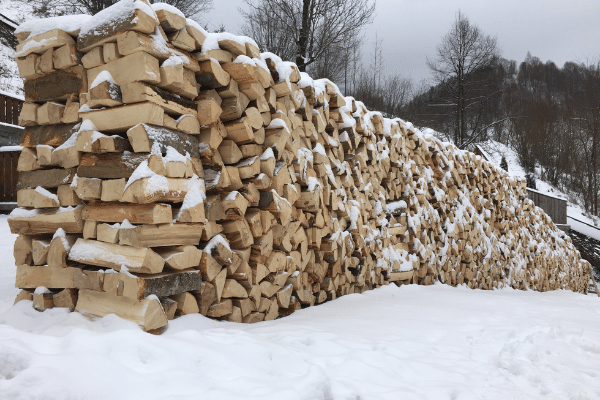
Next, if you have long limbs available or scrap 2x4's, make parallel runners between your pillars.
This allows the wood to be elevated off the ground which reduces animals and insects from nesting in the firewood stack, and it allows wind to wrap around the entire stack of wood, allowing it to dry out faster.
The photo below shows a great example of using long limbs as runners to elevate the wood.
I like using limbs because they're free and you usually have a few left over after cutting up a tree.
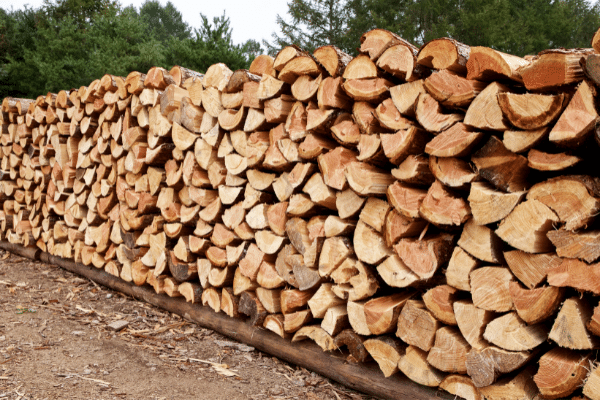
In between the two pillars, place
your remaining logs next to each other, with the cut ends facing the same direction.
If you have pieces of wood with the bark still left on them, place them upwards and on the topmost layer, which should be as tall as the pillars.
I recommend only making a firewood stack that's 4 feet tall.
Anything taller becomes unsteady and will probably fall over in a strong wind.
However, you can make the firewood stack as long as you want, if the ground is level enough to support it.
The Best Way To Stack Firewood In A Firewood Rack
If you are able to afford it, and it is more aesthetically pleasing for you, a firewood rack works wonderfully as a way to stack your firewood.
While stacking your firewood, remember to keep the rack sturdy by placing it on a level piece of ground.
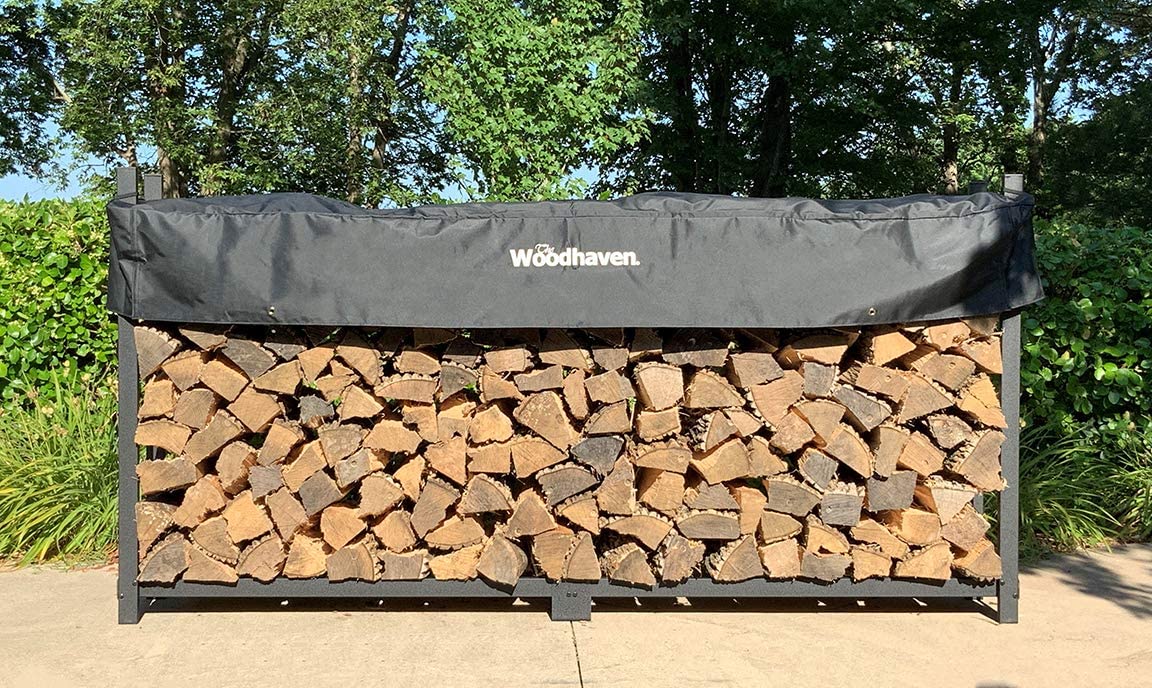
Ensure your firewood is all similar
sizes and lengths for stacking.
Lay the firewood side by side onto the rack in one direction, and then do the same in the opposite direction.
Once you have your stack at the height your rack allows, fill in big gaps with smaller pieces of wood.
The Best Way To Stack Firewood - Platforms To Elevate The Wood
Keeping your firewood off the ground is crucial to stop the bottom row of the firewood stack from rotting.
While a purchased platform like a wood rack, or a wood shed might be the easiest solution, it can also be costly.
Try these easy and affordable ways to elevate your firewood off the ground:
- Pallets - Pallets can often be found free from companies. Look for large stacks of them next to industrial buildings and ask the manager if you can take some.
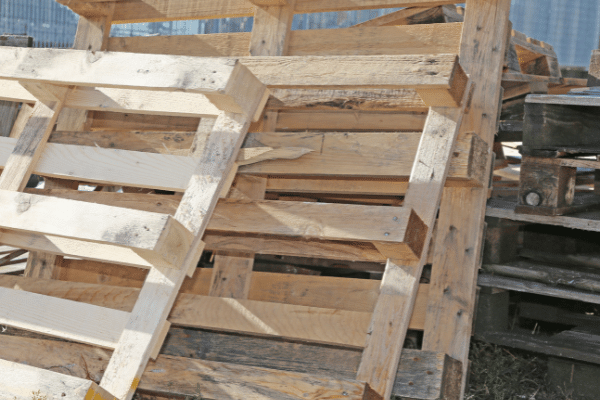
- Cinder Blocks and 2x4s - Not free like pallets, but still extremely affordable. Place cinder blocks under your 2x4s to support the weight of your firewood. This will work best with the end pillar wood stacking method.
- Cinder Blocks and 2x4s (the other way) - Place two cinder blocks next to each other and then place your 2x4s sticking out of the cinderblocks, making two Vs. This is great for small logs, stacking sticks, and smaller kindling pieces next to your firepit.
- Railroad Ties - In some areas, railroad ties are easy to come upon when old railroads are ripped out to make way for trails and outdoor recreation areas. Railroad ties are supposed to be directly on the ground, which makes them a great base for firewood. Just remember not to burn the railroad ties when they get old because they have loads of chemicals in them.
- Concrete or Pavers - If you are in a climate that allows for this, you can stack your wood directly onto a concrete platform or a platform created by pavers.
The Best Way To Stack Firewood Using A Cover
Using a cover to protect your stack of firewood is a great way to keep rain and snow off the wood.
Remember, you don't want to cover the entire stack of firewood because it will cause your wood to become moldy.
Of course, a wood shed is the dream for many.
While purchasing one might be out of the question, making one might not be too difficult to build on your own.
Wood sheds can be made fairly easy if you have the time and materials.
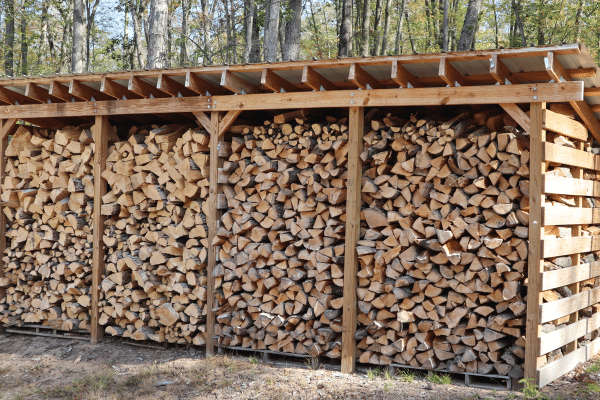
Tarping is the most common
practice to protect wood piles and it's simple to do.
Just make sure you only tarp your top layer of wood and not the entire pile.
This will keep the wood protected from snow fall and rain accumulation, while keeping the sides open to the wind.
And finally, a metal roof overhang may be all that you need for your wood pile, and easy to make.
If you have a previously standing structure (other than your house) that you can add a metal roof overhang to, you can create a covered space for your woodpile.
The Best Way To Stack Firewood - Overall
When choosing the best way to stack firewood, you have a lot of different options that work great.
Choose an option that works best for your needs and you'll enjoy seasoned firewood that will create a hot, long lasting fire that everyone can enjoy.
